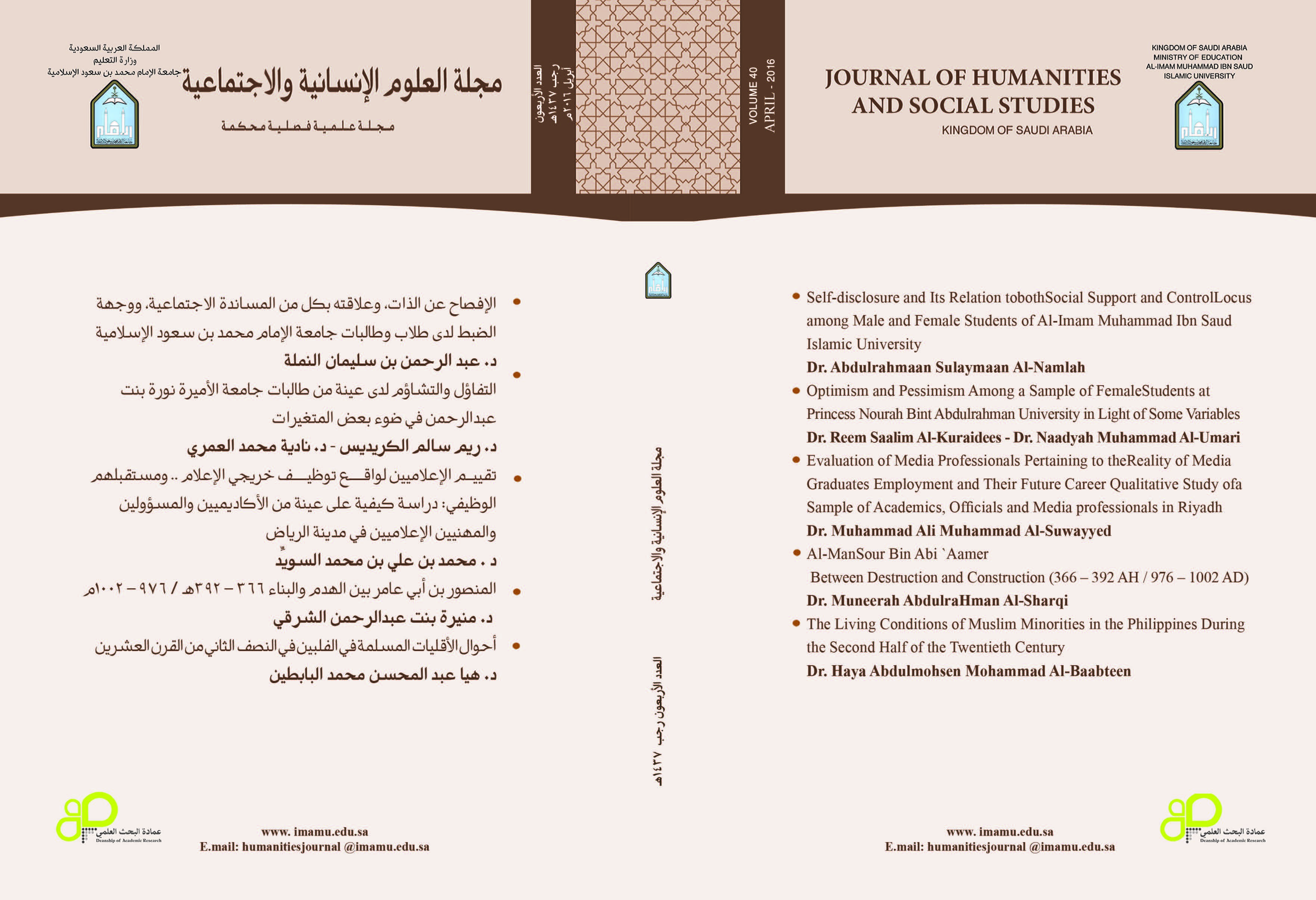Optimism and Pessimism Among a Sample of Female Students at Princess Nourah Bint Abdulrahman University in Light of Some Variables
Abstract
This study is aimed at identifying the popular average rate of optimism and pessimism among students of Princess Noura Bint Abdurrahman University, and detects the differences in optimism and pessimism among students based on age, order within family, level of study, marital status, accommodation (independent – sharing accommodation, monthly income, and the difference in grades.
The findings concluded that there is an inverse relationship which indicated that whenever the degrees of optimism increased among university students, the degrees of pessimism decreased. The absence of significant differences in the degrees of optimism and pessimism among the study sample is attributed to the difference in age or order within the family, or the difference in the marital status, or to the difference in the type of accommodation.
In addition, the presence of statistically significant differences in the degree of optimism among the study sample individuals is attributed to difference in the level of study,or to the monthly income. While there are significant differences in the degree of optimism, according to the monthly income in favor of the respondents who entered their families (20,000 riyals and more), and the different academic level for the benefit of the eighth level, and the difference in their grades for the benefit of the students that get the grade of (excellent). However, the presence of statistically significant differences in the degree of pessimism is attributed to the difference in their grades for the benefit of the students that got a (Good) grade.




